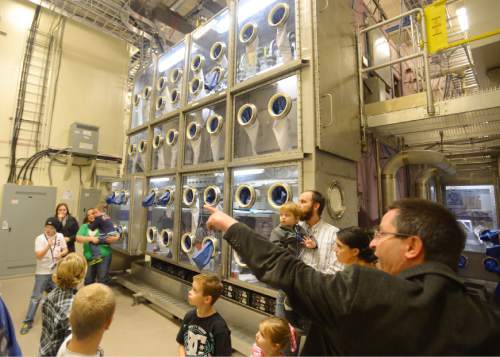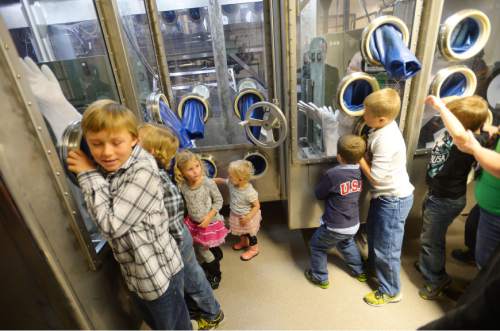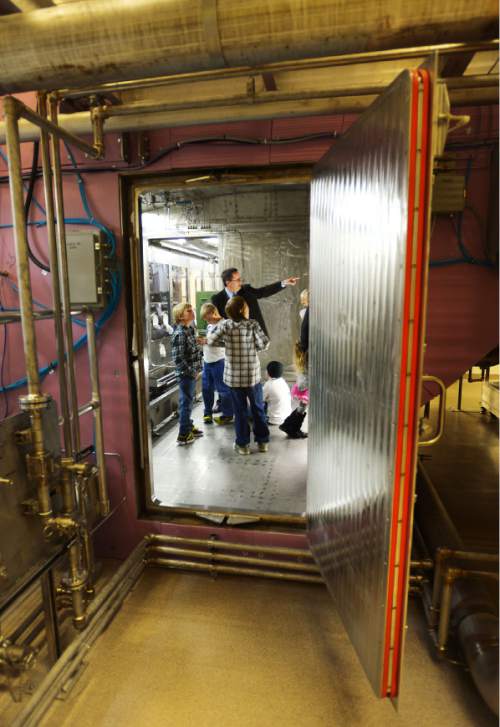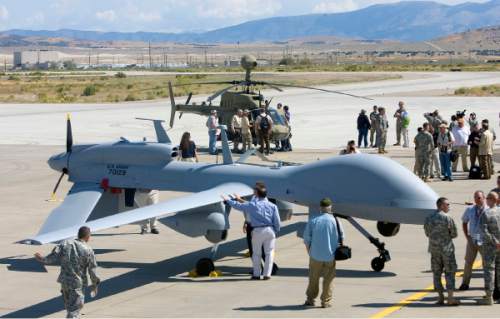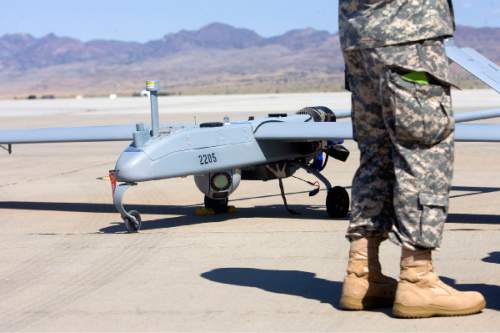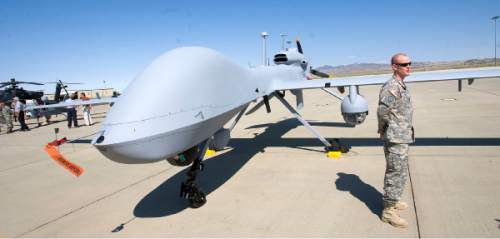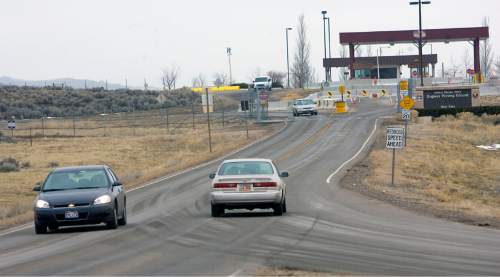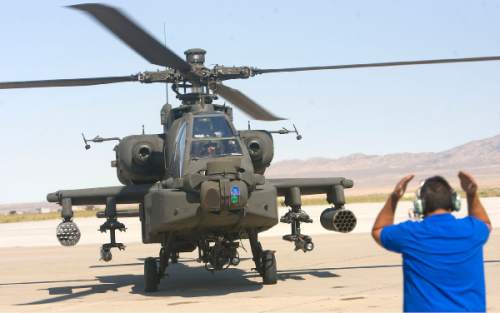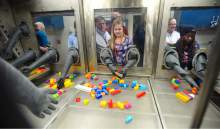This is an archived article that was published on sltrib.com in 2015, and information in the article may be outdated. It is provided only for personal research purposes and may not be reprinted.
It's larger than Rhode Island and sits ... somewhere in west Utah. And until Wednesday's announcement that Dugway Proving Ground shipped live anthrax to labs across the United States and South Korea, that's all most knew about the installation.
Here's what else you should know about Dugway Proving Ground.
• This isn't the first mistake, or suspected mistake
The most famous incident involving Dugway Proving Ground happened in mid-March 1968. As Dugway was in the midst of open-air testing of the nerve gas VX, thousands of Utah sheep in Tooele County's Skull Valley began dying.
A 1970 report by researchers at the Army's Edgewood Arsenal in Maryland said there was "incontrovertible" evidence that a nerve gas killed the sheep, but the Army never has acknowledged that it, or the Dugway testing, was responsible.
For a time, it was suspected that the anthrax in the 2001 attacks — which killed five people when letters containing the germs were sent to lawmakers and news organizations — originated at Dugway. The FBI and scientists later determined it did not.
• Dugway tests more than biological and chemical weapons
In recent years, one of the largest Dugway programs has been testing unmanned aerial vehicles — the military's preferred name for drones — for the U.S. Army. The vast expanses of Dugway sit adjacent to the even larger Utah Test and Training Range, operated by the U.S. Air Force, allowing for all kinds of tests involving the drones, their components and missions in tandem with manned vehicles, especially helicopters.
Dugway also tries to find better ways to detect a biological or chemical weapons attack and tests and trains personnel in methods for cleaning contaminated sites. It also tests how military equipment, from fatigues to M-16s to tanks, react when contaminated. There's also testing on meteorology and conventional explosives.
And don't confuse Dugway with the former Deseret Chemical Depot, now called Tooele Army Depot South Area, where the Army destroyed chemical weapons to comply with treaties. That's a different installation closer to Tooele. Speaking of which ...
• It's out there
Saying Dugway sits 85 miles southwest of Salt Lake City doesn't really do justice to Dugway's location. The last 36 miles of the drive is on a two-lane highway through the sparsely-populated desert.
Even that only gets you to Dugway's main gate. To reach the biological testing facility at Dugway, you need to drive about 20 minutes into the installation's interior — not that the public is allowed to do so. Crossing Dugway would take a couple of hours.
A lot of people associate Dugway with the town of Tooele, but even reaching Tooele from Dugway's main gate requires a 45-minute drive over a mountain range.
• There's not much military
Dugway is a research facility, and so there aren't many active-duty military there on a regular basis. There's Dugway's commanding officer, currently Col. Ronald Fizer, a command sergeant major, and maybe one or two other uniformed personnel assigned to Dugway. That's it.
The rest of the 1,715 employees who worked there as of February 2014 were civilian employees of the Army or Department of Defense, other government employees and contractors. It's not unusual to spend a day at Dugway and see no one in uniform.
However, Army and National Guard units from elsewhere go to Dugway to train. Dugway's public affairs personnel recently published an article about Marine Corps reservists battalion training there with firearms and light armored vehicles.
• Dugway is its own town
A lot of Dugway's employees live on the installation. The Tooele County School District operates a school there, and as you enter Dugway, one of the first things you see is the school's football field. There are also stores, restaurants, a recreation center and a golf course. A Mormon ward house sits outside the main gate.
• It's secretive
A lot of the work done at Dugway is classified, which is one of the factors that hindered an investigation into the sheep kill in 1968. But even the work that's not classified doesn't get discussed much. That's in part because of the military tendency toward secrecy and the remote location of Dugway.
Perhaps even Dugway and the Army thought it was time to loosen up when in December 2013 it hosted a family day for the first time. For many of the spouses and children of the employees, it was not only the first time they saw where their mother or father worked, but the first time they learned anything about what they did there.
Twitter: @natecarlisle


